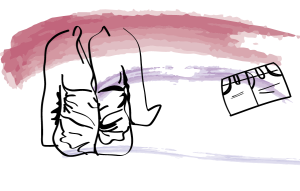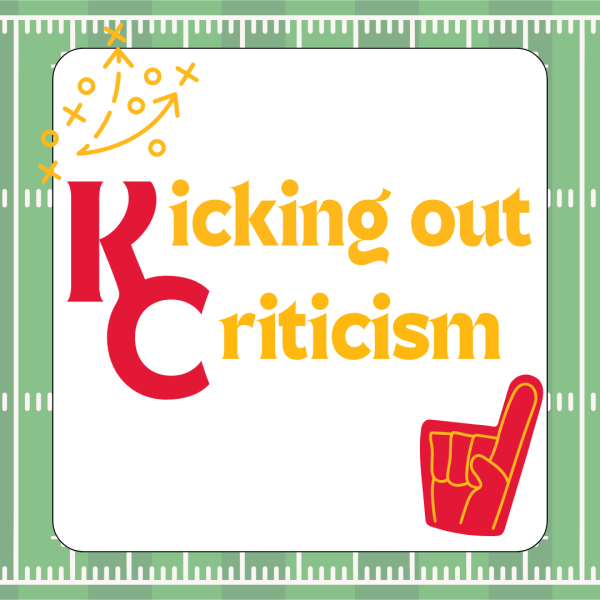Why we may need to reconsider the dress code
A button-down shirt was the piece of clothing that did me in.
It had a couple of buttons undone. I felt confident – I was wearing an outfit I liked and didn’t give it a second thought. However, it only took about half an hour for the ramifications of my clothing choice to take place. During a private conversation, a male teacher blatantly stared down my shirt for at least two minutes, despite the fact that I shifted positions and crossed my arms over my chest multiple times in an attempt to get him to stop. Ten minutes later, the other teacher in the room pulled me out in the hallway to inform me that my choice of shirt was “distracting to my peers” and that I needed to either button it up higher or go to the office. She did not mention the violation of my privacy and trust by her colleague, or the fact that I had received no abnormal attention from the other students. Instead, she fell back on the dress code – a rule that allowed her to blame me for any negative attention coming my way.
“In theory, the dress code is in place to keep this an environment conducive to learning,” teacher Maren McCrossen said.
 Obviously, school is a place of learning. The problem lies in assuming that the way someone dresses harbors students’ potential to be educated. In fact, pulling students out of class to lecture them about their choice of clothing disrupts the learning of the entire class.
Obviously, school is a place of learning. The problem lies in assuming that the way someone dresses harbors students’ potential to be educated. In fact, pulling students out of class to lecture them about their choice of clothing disrupts the learning of the entire class.
But the problem with the dress code is not that it doesn’t make sense. A dress code, especially one that blatantly targets young women much more than young men, plays into the patriarchal ideas that women’s bodies are inherently sexual and that any sexualization of these bodies is the fault of the women who own them. When teenage girls break dress code, they are told that they need to cover themselves up, be ashamed of their bodies. In a culture that already both shames and sexualizes the bodies of women of all ages, this attitude is harmful and toxic.
“[We should be having] more education on respecting the body, instead of teaching girls that their bodies are something they have to hide and cover up,” senior Lainey Schrag said. “Your body should not determine who you are and how you are treated. You should be able to wear what you want without unwanted attention.”
This unwanted attention comes in many forms – lewd comments, prolonged staring and, in the worst case scenario, a physical attack upon a student.
“Sometimes, you open yourself up to that, and when teenagers’ attention is distracted, sometimes they act on those distractions, and we want to avoid unsafe situations,” assistant principal Todd Dain said.
It is, of course, imperative that students be protected from physical or emotional harm. But the way to protect them is not to blame them for any harm that may come their way. Harassment, either emotional or sexual, is not the fault of the victim.
“In a rape trial, they used to ask you, ‘Well, what were you wearing?’” Schrag said. “Because that could mean, ‘Well, you were dressed super provocatively; you should’ve expected something like that to happen to you.’ Or, if you were wearing a tank top and short shorts, ‘You shouldn’t be surprised that guys are giving you attention.’ I think that carries over and has the implication of teaching that if someone is dressed a certain way, it means they are a certain way, and they are expecting attention. It’s implied that if you’re a girl and you’re dressed more provocatively, you will get that kind of attention, regardless of if you want it or not.”
The rhetoric of victim-blaming — of “she was asking for it,” — not only fails to protect victims but makes it more difficult for them to trust those who claim to help them. I didn’t report the teacher who stared down my shirt because I knew what the reaction would be — “You broke dress code, so you should have expected this. It’s your fault for dressing that way.” This type of dialogue excuses perpetrators of harassment and does nothing to solve the problem.
“The outfits I wear show how I feel – I’m comfortable in my body,” senior Madison Wright said. “I feel like it’s kind of degrading when I have to change because I’m disturbing to the ‘public eye.’ That’s hurtful to me.”
School should be the last place that encourages girls to be ashamed of their bodies. However, policies like strict dress codes teach us that our bodies are not our own; they belong to the people around us, who are free to stare and harass at no cost to themselves. If students are truly to be protected, there needs to be a dialogue between students and staff about what a dress code entails, and if enough is being done to ensure that our school is truly a place of learning. Above all, students need a safe space in which they can develop their identities and confidence safely, which cannot be done if they are constantly told to be ashamed of their bodies and cover themselves up.
“Your body is yours – nobody else’s,” Schrag said. “Do what you want with it.”

Madison is a first-year staff writer for the Standard, and spends her work time writing articles or doodling in the margins of her official newspaper notebook....






